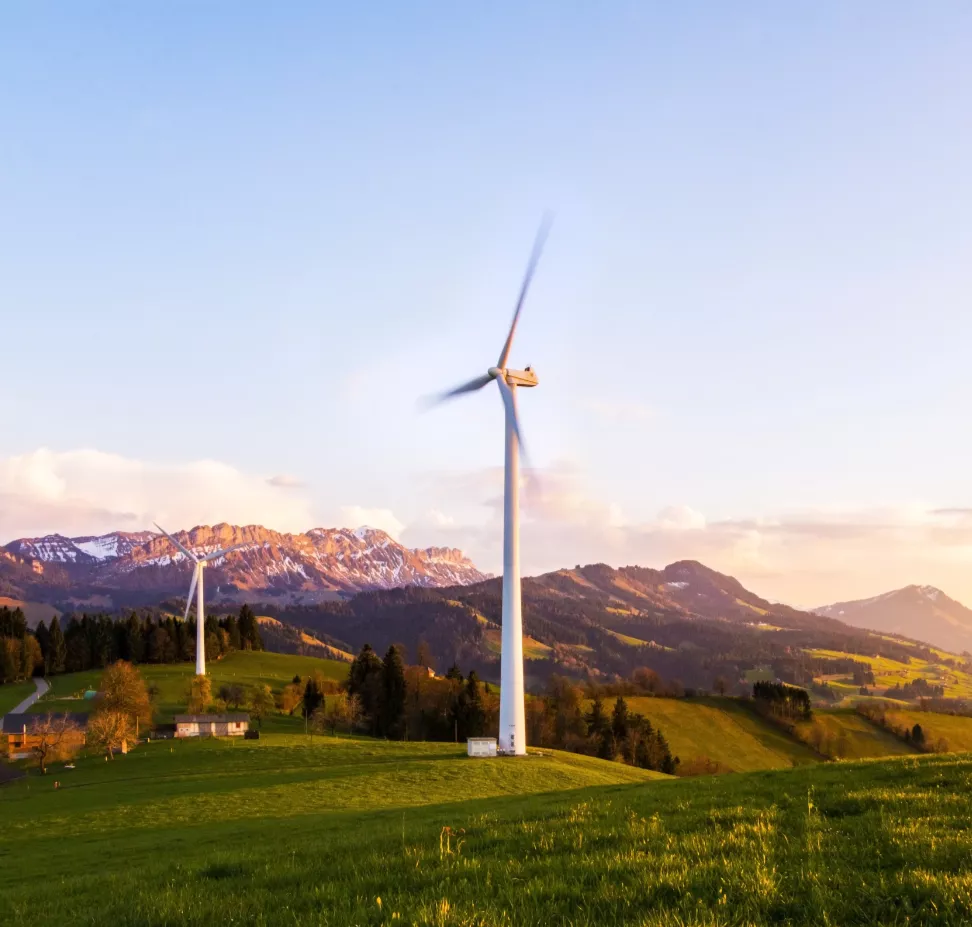Making sense of AI’s contradictions: Energy and sustainability

Could energy-intensive GenAI be a solution to high energy use?
When it comes to sustainability, technology can paradoxically be a contributing factor to the problems it’s trying to solve. For instance, we know electric vehicles (EVs) produce far less CO2 than gas-powered vehicles, but we’ve also seen that the mining of some of the minerals used in EV batteries can have negative environmental and societal ramifications. Many consumers are also forced to power their EVs with electricity generated by fossil fuels (almost two-thirds of the world’s electricity comes from coal, natural gas, and other nonrenewables) when renewable sources aren’t available.
As this example illustrates, there are often gray areas around the effort to achieve net-zero. We’re seeing something similar in the field of generative AI. Though a relatively new technology, it’s already getting a lot of press for its outsized use of energy and water and the amount of CO2 it generates. As with EVs, there’s no net-zero solution for GenAI yet, but there are ways to lessen its harmful aspects. The responsibility for making GenAI more sustainable lies partly with the hyperscale cloud providers, including Microsoft Azure, AWS, and Google Cloud, which provide GenAI technologies such as AI models and even some of the chips that power these models. But GenAI itself can also be a powerful tool in organizations’ efforts to minimize energy consumption and carbon emissions.
GenAI—energy-hungry, water-thirsty, and carbon-creating
At present, GenAI is an incredibly energy- and resource-intensive technology. Training GenAI models requires vast amounts of computational power and about 10-15 times more energy than traditional CPU-based computing. For some countries and regions, power demands at data centers—the sources of the computational power needed for GenAI—have resulted in spikes in overall energy usage. In Ireland, for example, data centers are expected to be responsible for 30% of the country’s total energy consumption by 2028. In areas with older energy infrastructure, GenAI could strain the grid beyond the point of efficient function.
And it’s not just energy use that’s causing GenAI to raise sustainability concerns. The machinery in data centers running GenAI must also be kept cool, which in most regions means using air-conditioning and large quantities of water. Couple this with the CO2 generated when these models are prompted to create text and images at a rate of “millions if not billions of times every single day,” and it becomes clear that GenAI could have a detrimental impact on the environment similar to driving gas-powered cars or taking transcontinental flights.
But as we learned in the introduction, the GenAI market is expected to expand rapidly in the coming years. So, what needs to happen to keep GenAI from becoming a drain on our energy supplies and a burden on the environment?
More renewables + more efficient technology
One approach to making GenAI more sustainable is through regulation. Bills like the Artificial Intelligence Environmental Impacts Act of 2024 in the United States and the European Union Artificial Intelligence Act are setting the stage for more public-sector-driven controls.
According to Suleiman Mirzad, Northern California sustainability lead at Slalom Consulting, however, “It’s not just a matter of putting regulatory requirements in place. This is a truly holistic global problem. If GenAI requires 10-15 times more energy, that amount of additional consumption must be satisfied through renewable energy.” Many hyperscalers are addressing this need by pledging to run not only their data centers but their entire operations on 100% renewable energy to achieve net-zero—or even carbon-negative—emissions within the next 5-15 years. Most are also taking similar steps when it comes to their water use.
In addition to using fewer and cleaner resources for the data centers running GenAI, hyperscalers will also have to find ways to architect the technology so it’s not consuming as much energy, no matter the source. “One thing we’re noticing now,” says Mandar Zope, Slalom senior principle, Microsoft Business Applications, “is that every existing application, be it CRM or ERP, has a GenAI component, which means it’s producing more emissions. Whatever architectures we design in the future—especially ones with a GenAI component—will need to be much more efficient and designed in ways that don’t cause more problems from an emissions perspective.”
If history is any indication of how this could play out, we need only to look at computing’s evolution over the past few decades. “Back in the 1980s and ‘90s, the 386 processor was a real power hog and was working on desktops,” states Mirzad. “But once we started to use our phones as our computers of choice, the chip manufacturers were forced to create more powerful chips using less and less energy. Now the chip can be hundreds of times faster at certain tasks and yet uses far less than 5% of the power used by the 1980s-era 386 chip to keep your phone going all day.”
Whether it’s from regulation, market forces, or a sense of corporate responsibility, providers of GenAI technology will need to answer the call for much greater efficiency in architecture, software, hardware, and chips, both from the standpoint of energy use and when it comes to responsible recycling of the chips at end of life.
How GenAI can help
Though it may seem like fighting fire with fire, generative AI can be a valuable tool in the effort to operate more sustainably. Most organizations look at three different areas where emissions are produced, which the Greenhouse Gas Protocol defines as follows:
- Scope 1: direct emissions from operations, such as running machinery
- Scope 2: indirect emissions, including the energy sources that power the business
- Scope 3: value chain emissions, such as from disposal of products sold and from the purchase of goods (supply chain)
Accessing information across all three scopes isn’t always a straightforward process. “It’s a matter of what gets measured gets managed,” says Chris Neal, Slalom senior director of Technology. “You may be working with a lot of manual data, which tends to be inaccurate. Imagine being pointed to bad data on your emissions and trying to react to that data and make decisions based on it. You’re probably not going to mitigate those emissions.” In this type of scenario, GenAI can help organizations automate much of their data collection and make sure that data is clean.
With this clean, comprehensive, and well-organized data, GenAI can perform calculations to provide valuable insights, even in cases where the business’s organizational structure is more complex. “The goal for the GenAI tools is to ingest data, structure it, and make it helpful for you to calculate emissions so that you can create reports,” explains Zope. “But at the same time, let’s say a company has 20 different locations. It might have 20 different electricity providers that provide data in 20 different ways. GenAI helps you to structure the data and make those calculations so you can produce your analyses faster and with greater accuracy.”
GenAI’s natural language interfaces can also be used to dig even deeper and ask more probing questions of your energy and emissions data, such as “What am I missing?” or “Where should I focus my improvement efforts?” And because GenAI doesn’t “think” like a human, it can render observations and recommendations which, on the surface, may seem counterintuitive but can turn out to deliver impressive results. “Look at the way IBM’s Deep Blue won the chess match against a world champion,” offers Mirzad. “It didn’t win the way a human wins, which would be to take the center of the board. It won in this weird, crazy, nonintuitive way because it’s doesn’t think like us.”

Have questions about your AI journey?
Solving a global problem holistically
While the technology providers are largely responsible for minimizing GenAI’s carbon footprint, every organization—no matter what size—must take steps to operate more sustainably, and GenAI can help.
Consider these statistics and observations from a recent article by the Rochester Institute of Technology:
- Roughly 75% of an organization’s emissions are of the Scope 3 type, meaning they aren’t owned or controlled by that organization.
- Measuring Scope 3 emissions will require working with small and midsize enterprises (SMEs) up and down an organization’s value chain.
- More than 90% of the world’s businesses are SMEs, meaning every large organization likely works with dozens if not hundreds of SMEs.
Addressing a problem of this magnitude requires a holistic solution, and GenAI will prove its worth by providing the means for organizations to take action.




